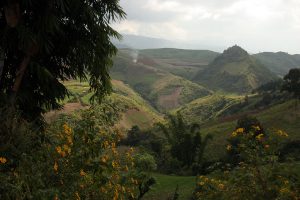Lost among the torrent of disheartening news from Myanmar was a report on the official opening of a new rail line bringing China’s high-speed railway network to the country’s border with Myanmar. The recently completed railway runs from Chengdu, the capital of China’s Sichuan province, to Lincang, a prefecture-level city in Yunnan province opposite the town of Chinshwehaw in Myanmar’s Shan State.
According to The Irrawaddy, Yang Haodong, the Chinese Communist Party secretary in Lincang, said at the railway’s opening ceremony on August 25 that the border would function as an important node of the Belt and Road Initiative (BRI) and would work to write a new chapter in the history of friendly “paukphaw” relations between Myanmar and China.
The new rail line is just the latest in a flurry of transport links that have bound Yunnan province, once a sparsely populated frontier region at the outer reaches of the Chinese empire, into China’s dense highway and rail network. It also reflects the long process of China’s deepening integration with Myanmar and the other nations of mainland Southeast Asia.
Since the late 1980s, Beijing’s ambition has been to create an overland corridor connecting Yunnan to the Indian Ocean via Myanmar. Initially intended to fire up the economies of China’s landlocked southwest provinces, this project has since attained additional strategic importance given it will help address China’s “Malacca dilemma”: its heavy reliance on the maritime choke point of the Malacca Straits.
While this process dates back to the end of the Cold War – and even earlier, if one considers the case of the Burma Road, which linked China and Myanmar during the Sino-Japanese War in the late 1930s – such cross-border projects have since become an important part of the BRI in Southeast Asia.
These efforts, collectively grouped together under the rubric of the China-Myanmar Economic Corridor (CMEC), a local sub-pillar of the BRI, involve two preexisting pipelines that run from Myanmar’s coast to Yunnan and a planned deep sea port at Kyaukphyu on the Andaman Sea, in addition to the construction of an expressway and new railway line from the border towns of Muse (Myanmar) and Ruili (China) to Mandalay, and thence via two branch lines to Yangon and Kyaukphyu. They also involve the creation of border trade zones, including one encompassing Lincang and Chinshwehaw, that will spur the growth of trade between the two nations.
As the Irrawaddy noted, the Chengdu-Lincang railway line, by thickening the physical connections between Myanmar and China, could provide another economic lifeline for Myanmar’s military regime, currently under sanctions from many Western nations.
But its significance goes far beyond that. The completion of this cross-border network of roads, railways, pipelines, and special trade zones has collapsed the vast distance that once separated the Irrawaddy valley from the Chinese heartland. Where it once took months to travel over the rough terrain from Mandalay in central Myanmar to Kunming in Yunnan, that journey today can be done in under 24 hours. A similar demolition of distance has taken place in Laos, where a Chinese-built railway will further slash travel times between Yunnan and the Lao capital Vientiane when it begins operations later this year.
The Chengdu-Lincang line thus marks a further step in the historic reorientation of mainland Southeast Asia away from its southern port cities – the region’s traditional centers of economic gravity – toward the economic giant to their north. It has also opened the sluice gates of Chinese capital and overland immigration into the nations of mainland Southeast Asia, a complement to the surge of southern Chinese immigrants that arrived in the region in the 19th and early 20th centuries.
In some ways, these integrative projects represent the fulfillment of an old imperial dream of connecting China with the lands to its south. During the 19th century, the French and British conquest of continental Southeast Asia was driven by a feverish competition to gain access to the Chinese market via the backdoor.
For decades, European explorers competed to open trade routes into the southern part of the Qing empire, via the Shan States (Britain) and the Mekong River (France). The two powers even drew up plans to construct railways connecting the two regions, most of which were never built.
The ambitions of London and Paris were ultimately defeated by the massive cost and engineering challenges, and the rising tides of anti-colonialism. But as the author and historian Thant Myint-U noted on Twitter, neither of these restrictions have prevented contemporary China from fulfilling the old imperial promise, with impacts on Myanmar that will extend far beyond the lifetime of the country’s current military junta. “What the British Raj contemplated,” Thant Myint-U wrote, “Beijing may realize.”

































